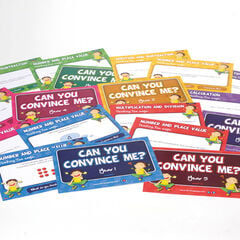
I was very interested to explore the impact of language and mathematical ability when working with EAL pupils in London several years ago and did a small piece of research focussing on how differing assessments could affect a child’s ‘mathematical age’. As you might imagine, there was a huge difference (up to 3+ years) depending on how the questions were presented and how much text was involved.
Of course, this applies to all pupils to varying degrees. Year after year, SAT’s markers note particular examples where large percentages of children go wrong due to their understanding of the vocabulary rather than the maths involved. Results would be very different for many children if the questions were purely about arithmetic with none of that pesky vocabulary and reasoning!
The truth is that maths is not really a language (imagine explaining life on Earth to an alien using only symbols and numbers!) It is partly universally understood, but anyone learning mathematics must be able to recognise and understand a huge amount of vocabulary as well as being able to explain their thinking.
In fact, the National Curriculum states that pupils should be able to “reason mathematically by following a line of enquiry, conjecturing relationships and generalisations, and developing an argument, justification or proof using mathematical language.”
Difficulties
The need to be able to understand a wide range of subject-specific vocabulary can, of course, have its difficulties. We already know of the huge word gap that will only have widened for many children this year.
Synonyms
There is a huge amount of maths vocabulary to learn, with so many synonyms and associated terms, especially around calculation. Examples include:
Addition – more than, altogether, add, together, total, mean, combined, plus, and, sum, another, addend
Subtraction – difference, subtract, take, less than, lower than, decrease, how many left, off, difference between, change, subtrahend
Multiplication – multiple, long multiplication, product, total, multiply, times, factors, squared, times larger, area
Division – half, halfway, share, share equally, mean, divide, each, factors, one quarter, three-quarters etc.
As well as this, many words have dual meanings.
A child’s first thought on hearing takeaway might not be subtraction, but McDonald’s! A net will more than likely be about football or fishing, the volume will be about turning the sound up and greatest will mean the best ever!
Should we try to simplify?
As teachers, we want children to be able to learn and understand in the best way possible. We try to make everything ‘child-centred’ and age-appropriate. We want concepts to be understood at the appropriate level, especially when children might struggle or come from homes where they have not been exposed to a rich background of vocabulary, or might be learning English as a second language.
So what do we do? We often looked to simplify.
We might:
– talk about “borrowing” or “taking from here and putting it there”
– say the = sign as “makes” or “the answer is”
– make a “bus stop” around a division sum
– refer to a “square” rather than a ‘square rectangle’
– talk about “crocodile’s mouths”!
We aim to simplify with the best of intentions, but does it help?
Using precise language
It seems that the opposite may be true and that rather than simplifying, it is better that children are exposed to precise mathematical language very early on to give greater clarity and enable them to engage with concepts in a more meaningful way.
Unfortunately, studies have shown that explicit teaching of maths vocabulary does not happen as it should in many classes. Children may understand a topic but not recognise the same concept in a word problem or be unable to explain what they have done – “I just did it in my head.”
Here are a few thoughts for your consideration…
- When planning lessons, think about the language elements that need to be made explicit and how this can be done.
The DfE Maths Guidance document has a very helpful ‘Language Focus’ for each aspect covered. These provide suggested sentence structures (like a script) for pupils to use to capture, connect and apply important mathematical ideas. Once pupils have learnt to use a core sentence structure, they should be able to adapt and reason with it to apply their understanding in new contexts.
For example, Year 4 – Division problems with remainders
“If the dividend is a multiple of the divisor there is no remainder.”
“If the dividend is not a multiple of the divisor, there is a remainder.”
“The remainder is always less than the divisor.”
- Define mathematical vocabulary to be used in every lesson.
Write it and display – perhaps on a ‘working wall’. Consider having a ‘maths word of the day’.
- Avoid using simplifications. Use the correct terms and definitions – for example
Square rectangle – rather than ‘square’
Transfer – rather than ‘borrow’ or ‘take’
Division bracket – rather than ‘bus stop’
Vertices – rather than ‘corners’ etc. etc.
- Make it your everyday practise to ask children if there are any words they are unsure of. Praise them when they point them out, encouraging a culture of ‘this is how we learn and progress’.
- Talk about mathematical vocabulary as a staff. It can be very confusing for children when teachers are using different terms; be clear about the words you will use and those you expect the children to use.
- Use talk partners to encourage as much verbalisation as possible.
- Create a maths dictionary as a class, which is added to throughout the year – perhaps have a special section for terms that have more than one meaning.
- Make sure there are opportunities for reasoning in every lesson.
Ready-made cards encouraging talk are great as starting points for many topics. Cards such as ‘Can You
Convince Me?’ offer scenarios for all different year groups.






